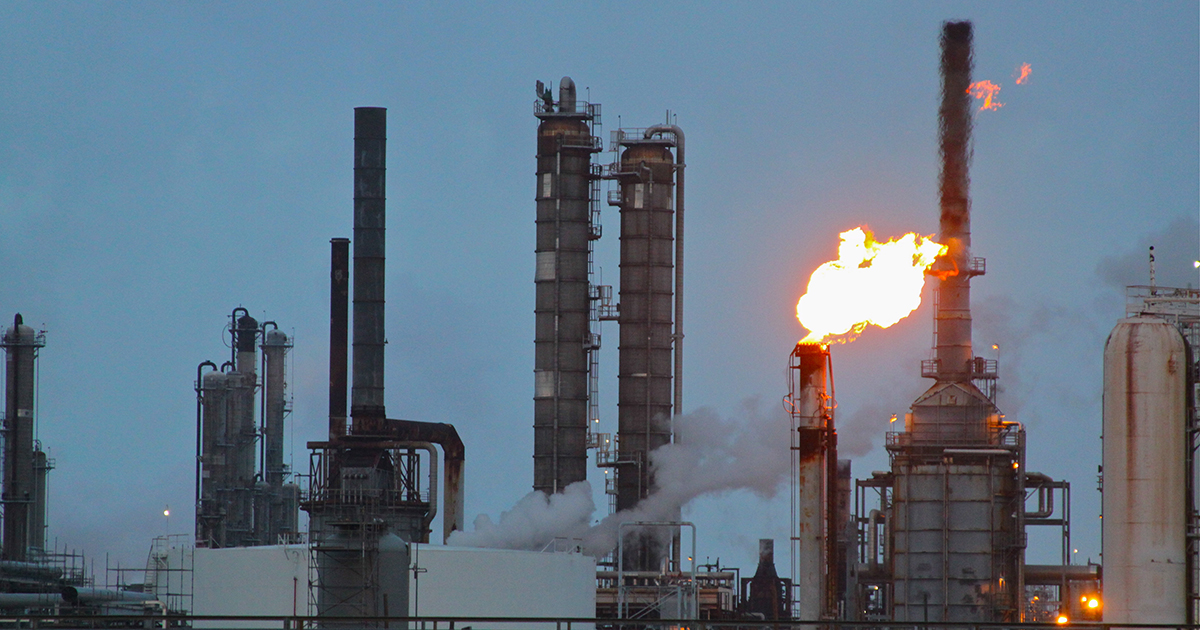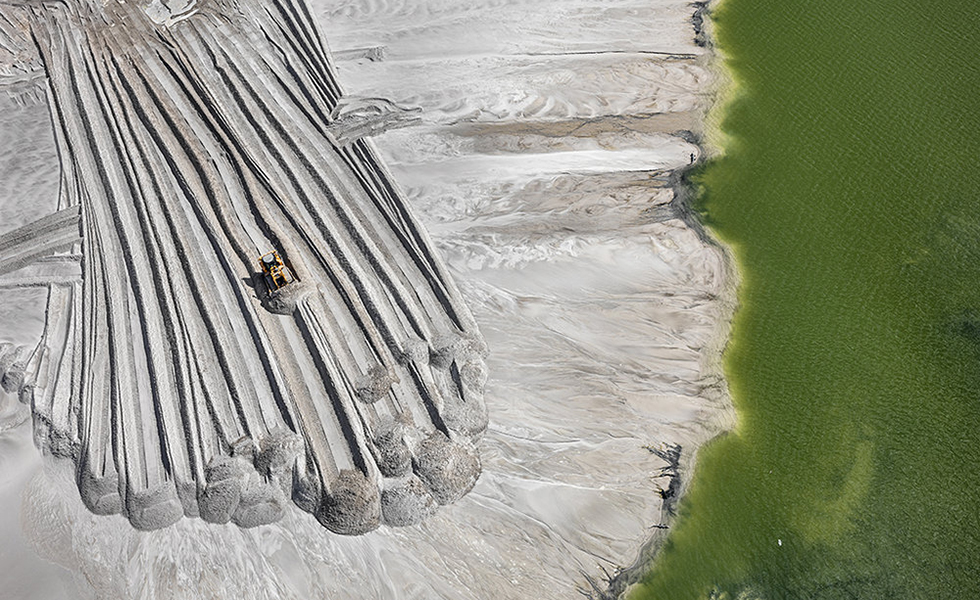
A New Study Shows that the Oil and Gas Industry is Wasting a Shocking Quantity of Natural Gas in Texas
Frackers are burning millions of dollars worth of natural gas — releasing hazardous chemicals and greenhouse gases into the air, worsening climate change and creating health risks.

Above: Distillation towers and flare at the Shell Deer Park Refinery.
A new study by researchers at the University of Southern California and San Francisco State University found that oil and gas operators in South Texas burned almost 160 billion cubic feet of natural gas — enough to power 2.5 million homes for a year — from 2012 to 2016.
The study, published earlier this month in the journal Environmental Science and Technology, looked at 49 rural Texas counties that are part of or adjacent to the Eagle Ford Shale and identified almost 44,000 oil and gas flares, combustion stacks that burn off natural gas. The researchers found that just five counties — Dimmit, La Salle, McMullen, Karnes and DeWitt — accounted for about 70 percent of the flaring, and the vast majority of flares were at oil-producing fracking sites.
“I was surprised by the sheer number of flares,” said Meredith Franklin, an environmental statistician at the University of Southern California and lead author on the study. “What we’re concerned about is air toxins and also stress. When there’s a lot of flaring going on, there’s usually a lot of noise, and just the sight of it can be stressful [for nearby residents],” she added.

Oil and gas production in Texas has risen dramatically in the last decade. In the Eagle Ford Shale, which stretches across South and Central Texas, natural gas production has more than quadrupled since 2011. In West Texas’ Permian Basin, oil production has increased from about 1 million barrels per day in 2011 to 3.8 million barrels per day. Without the pipeline capacity to move product, oil and gas producers are increasingly flaring excess natural gas. The result: They’re burning off millions of dollars worth of usable natural gas, releasing hazardous chemicals and greenhouse gases into the air, worsening climate change and creating health risks for nearby residents.
Flares release a slew of harmful pollutants, including volatile organic compounds, sulfur oxides, heavy metals and black carbon soot. Researchers have found that flares worsen air quality and quality of life of the people living nearby. A 2018 study found that pregnant women in Dallas-Fort Worth’s Barnett shale area who live close to oil and gas wells had higher odds of premature births.
Ramona Nye, a spokesperson for the Texas Railroad Commission, the state agency in charge of regulating the oil and gas industry, said that operators are issued permits to flare when pipeline capacity is insufficient. Companies may also flare during shutdowns, repairs and maintenance. Since January 2018, the agency has received seven complaints about flaring and has issued one violation notice, she said.
The new study likely underestimates the amount of gas being flared. Franklin’s group calculated the volume of gas flared by analyzing satellite data that picked up heat sources, but also used industry-reported numbers in their calculations. Academics and environmental groups suspect that the industry underreports the amount of gas being flared and, as a result, Franklin admits that her study probably doesn’t account for it all.
“When there’s a lot of flaring going on, there’s usually a lot of noise, and just the sight of it can be stressful [for nearby residents].”
Franklin’s findings roughly align with those of three other recent studies that also attempted to quantify the amount of natural gas being flared in Texas. S&P Global Market Intelligence estimated that the oil and gas industry flared 163 billion cubic feet statewide in 2017. Last month researchers with Environmental Defense Fund estimated that operators in the Permian flared 104 billion cubic feet of gas in 2017, almost double the amount producers reported to the state.
At a recent Texas Senate Natural Resources and Economic Development Committee hearing, lawmakers questioned officials with the Railroad Commission about the apparent discrepancy in the numbers oil and gas operators were reporting to the agency. Ryan Sitton, one of the agency’s three commissioners, said he believed “the volumes reported to us are very close to accurate.”
Colin Leyden, a senior manager at the Environmental Defense Fund, said that new technological improvements in satellite monitoring — if adopted by state regulators — may eventually make it very difficult for producers to incorrectly report the amount of gas they’re flaring.
“When you’re talking about 1,000 wells in a 1,000-square-mile area you’re never going to have boots on the ground, so I think this kind of satellite analysis is the future,” Leyden said.


